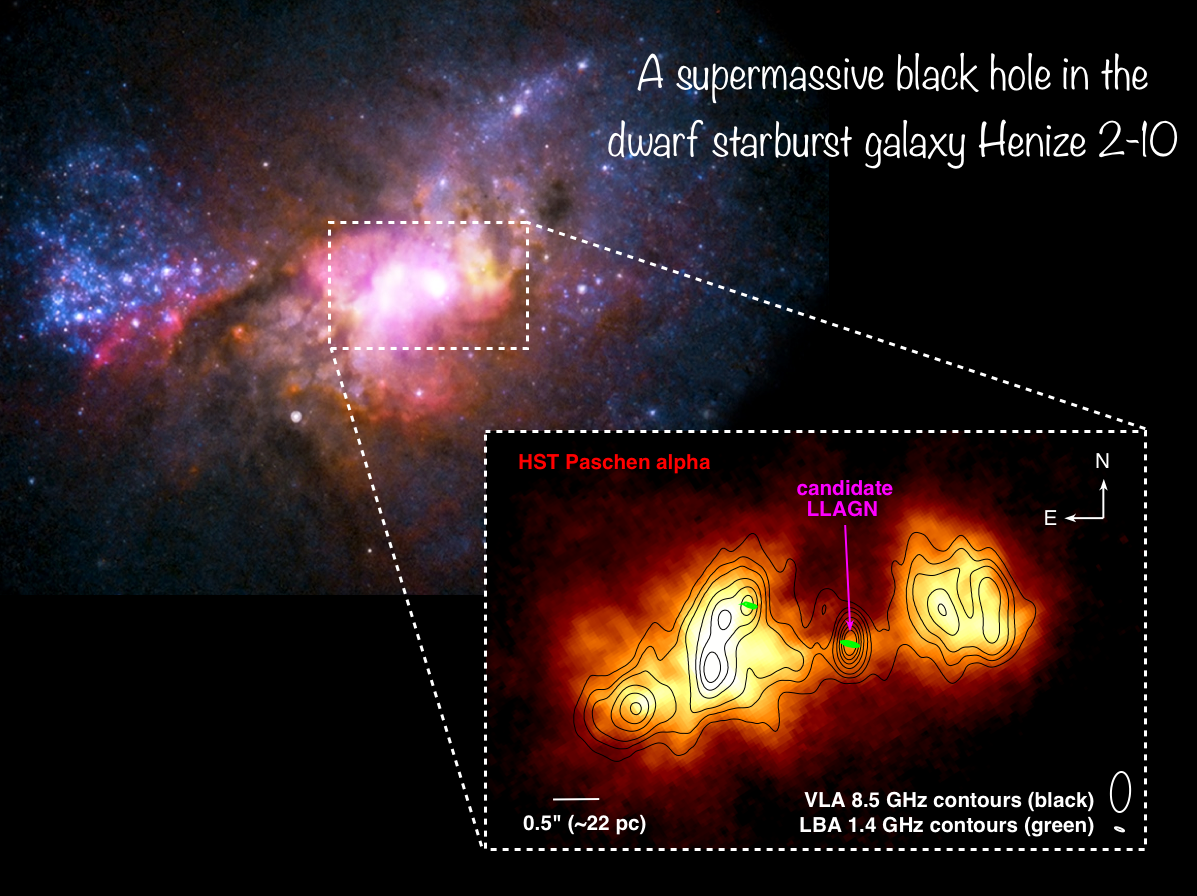| Description: | Active Galactic Nuclei (AGN) are amongst the most energetic objects in the Universe. Their phenomenal energy output is powered by the accretion of matter onto supermassive black holes - hungry beasts with a mass of millions, or even billions of times greater than that of the Sun. The intense radiation and strong winds which they produce can radically change the evolution of their host galaxies over cosmological time, repainting the landscape of structure we see in the modern Universe. The most massive AGN are typically the brightest and most spectacular, but "little monsters" - AGN powered by relatively lightweight black holes around a million times the Sun's mass or less - also dominate their surroundings and can furthermore provide important clues about the origin of supermassive black holes in the early Universe.
Henize 2-10 is a relatively nearby (9 Mpc) dwarf irregular galaxy undergoing an intense burst of star formation, as shown by the larger composite image above (purple=x-ray [Chandra], yellow=radio [VLA], red/green/blue=optical [Hubble]). In 2011, Reines et al. (Nature, 470, 66) showed that Henize 2-10 also hosts a probable "little monster" - a supermassive black hole of around a million solar masses. This little monster is relatively bright in radio and hard x-rays compared to the optical and near infrared emission, as can be seen by in the inset picture that shows radio emission from the VLA and near-infrared Paschen alpha emission observed with Hubble. Recently, the evidence for this AGN interpretation has been strengthened by a detection of the radio emission using the Long Baseline Array (LBA) in Australia, using an eVLBI observation at high data rate (1 Gbps per station). The LBA detection is shown in green in the inset image. The high angular resolution of the LBA confirms that the radio source is very compact (approximately 1 parsec in size), just as one would expect for a radio AGN. These results have recently been published in a letter to the Astrophysical Journal http://adsabs.harvard.edu/abs/2012ApJ...750L..24R). |

